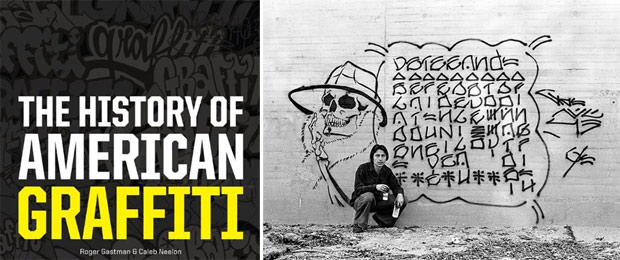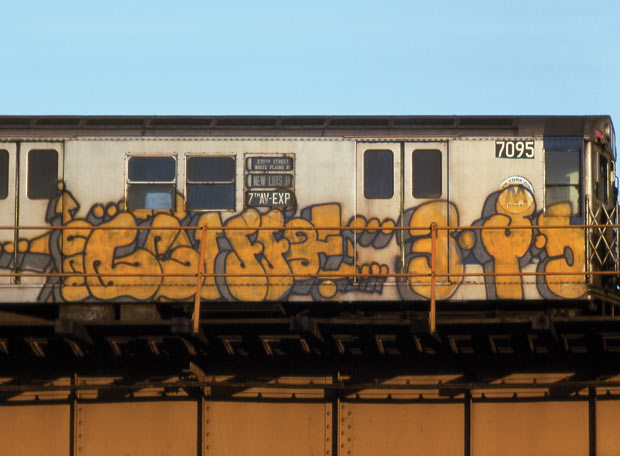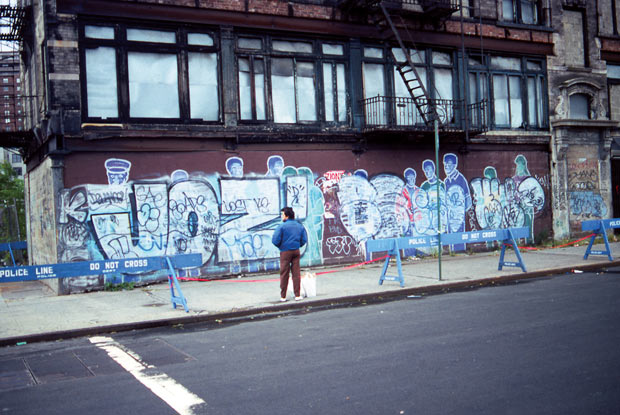History of American Graffiti
A massive new book on the world’s most notoriously underground artform


Not all graffiti books are created equally, but a behemoth like the forthcoming “History of American Graffiti” shows how meaningful collections of photos and information on the subject can be when edited with a careful eye. Co-authors Roger Gastman (co-curator of the eMoCA “Art in the Streets” show and co-publisher of the late Swindle Magazine) and Book of Awesome author Caleb Neelon had not just the eye but the expertise to pull off the 400-page tome too.

Inherently ephemeral—whether buffed out, painted over or otherwise disappearing over time before its full impact can be understood—documenting significant works is a challenge that makes a book of this scale so rare.
An obvious amount of effort went into researching and writing the book. When asked where they found all of the photos, Neelon described the process as “searching through the shoe boxes and albums of more than 200 contributors from around the country.”

The ambitious book starts with the statement that, “Humans write graffiti,” and follows with what amounts to a vast archive of the visual expressions that have surfaced around the world, how each country has contributed to the overall aesthetic and similarities or differences among regional styles. One example, the popular U.S. WWII slogan “Kilroy Was Here,” is seen around the globe, but in Britain it’s called Mr. Chad, and in Australia the same cartoon of a bald man peeping over a fence accompanies the phrase “Foo was here.”

Profiles on key writers like San Francisco’s Twist (aka Barry McGee) and others like Washington D.C.’s Cool “Disco” Dan—who wrote in the ’80s and ’90s—offer further insight on graffiti as a universal culture. Gastman and Neelon remark, “what we’re really pleased about with the book is its breadth of coverage. Not just the obvious media centers of NYC/LA/SF but lots of amazing and untold local stories from the origins of scenes in all the other big cities around the United States. Miami, Boston, Seattle, Denver, Albuquerque and on.” Hawaii and Pittsburgh are even represented as hotbeds of creative activity.

The “History of American Graffiti” is available for pre-order from Amazon.












